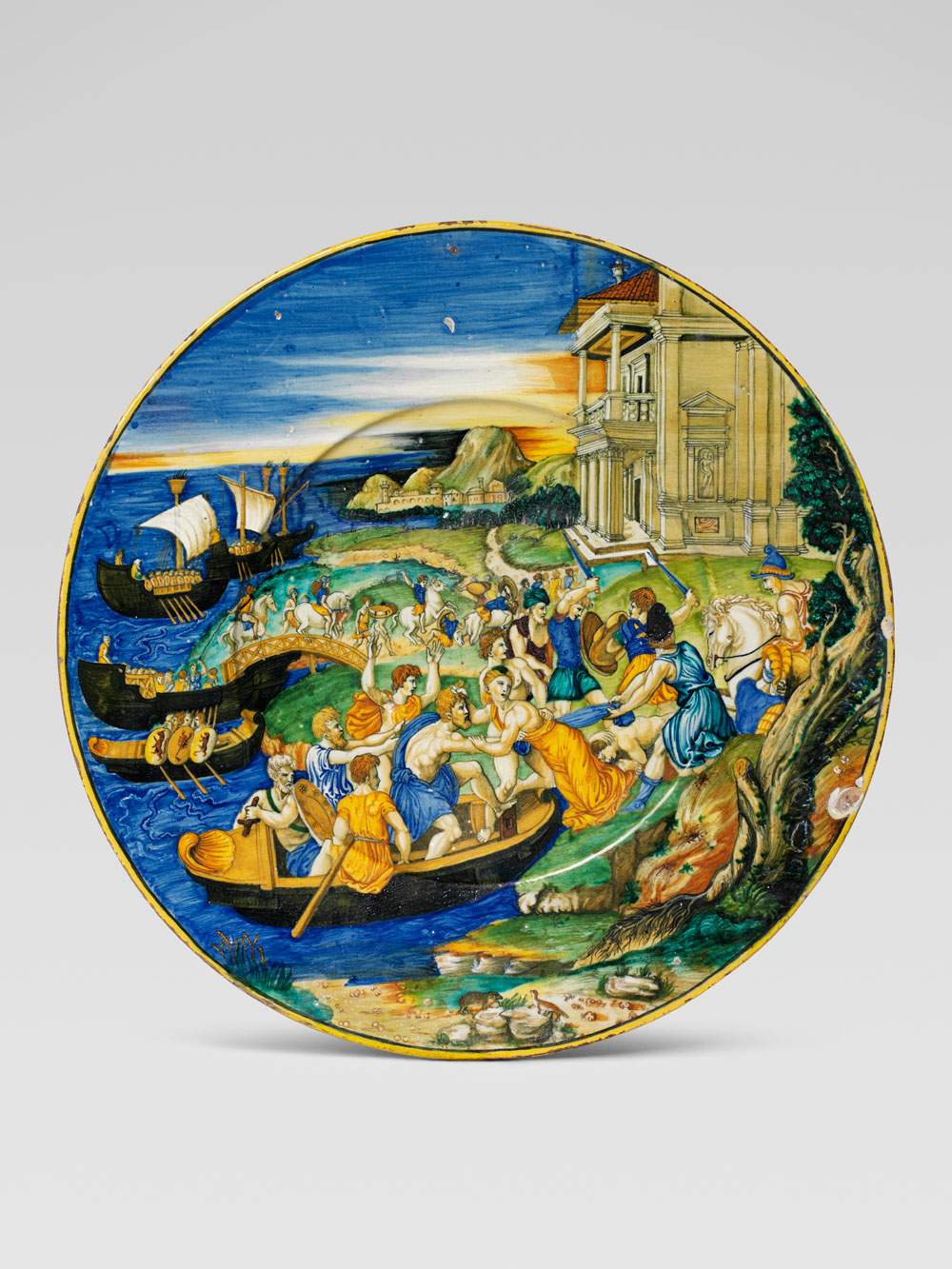Palazzo Madama in Turin will host the exhibition Italy of the Renaissance from June 13 to October 14, 2019. The Splendor of Majolica: for the first time, more than 200 Renaissance majolica pieces from some of the world’s most important private collections and the collections of Palazzo Madama will be brought together.
The history of Italian majolica, from the second half of the 15th century to the first half of the 16th century, will be recounted by one of the leading experts on Renaissance majolica, Timothy Wilson, in collaboration with Cristina Maritano, Palazzo Madama’s Conservator of Decorative Arts.
Beginning in the Camera delle Guardie with a large showcase evoking the sideboard, a piece of furniture that was the protagonist of the Renaissance dining room, the visitor will arrive in the Sala del Senato, where the main centers of majolica production in Italy, such as Deruta, Faenza, Urbino, Gubbio, Venice, Castelli, and Turin, will be presented, dwelling on the characteristics of decoration and the main artists, including Nicola da Urbino and Francesco Xanto Avelli.
Next, the wide variety of themes reproduced on historiated majolica will be illustrated, which, in addition to religious subjects, sees richly depicted secular subjects, drawn from ancient history and mythology, or concerning emotional life, such as amorous themes or the social status of patrons, such as heraldic services. The graphic sources of this story painting come from the repertoires of engravings that circulated in the workshops of majolica makers.
In the decor of the Italian home, particularly in country residences, historiated majolica were displayed on sideboards, but they were also used on tables and could be offered as gifts on occasions such as weddings and births. Small sculptures, sometimes masking the function of inkwells or fountains, were used for decorative purposes in private interiors. Particularly flourishing became the use of majolica in apothecary sets, often commissioned by religious institutions.
The exhibition concludes with a series of masterpieces, including a pair of albarellos by Domenigo da Venezia, a large refreshment bowl from Urbino, and the Medici porcelain jug from Palazzo Madama, an exceptional example of the first European imitation of Chinese porcelain, made by Urbino majolica makers working in Florence at the court of Francesco I de’ Medici.
An international conference, titled Collecting Makes Museums Great, will be held on September 16 and 17, 2019, at the venues of Palazzo Madama and the Palazzo dei Musei in Varallo Sesia.
Image: Nicholas of Urbino, The Abduction of Helen (1525-1530; plate; Urbino, private collection)
 |
| The history of Italian Renaissance majolica told in an exhibition in Turin |
Warning: the translation into English of the original Italian article was created using automatic tools. We undertake to review all articles, but we do not guarantee the total absence of inaccuracies in the translation due to the program. You can find the original by clicking on the ITA button. If you find any mistake,please contact us.